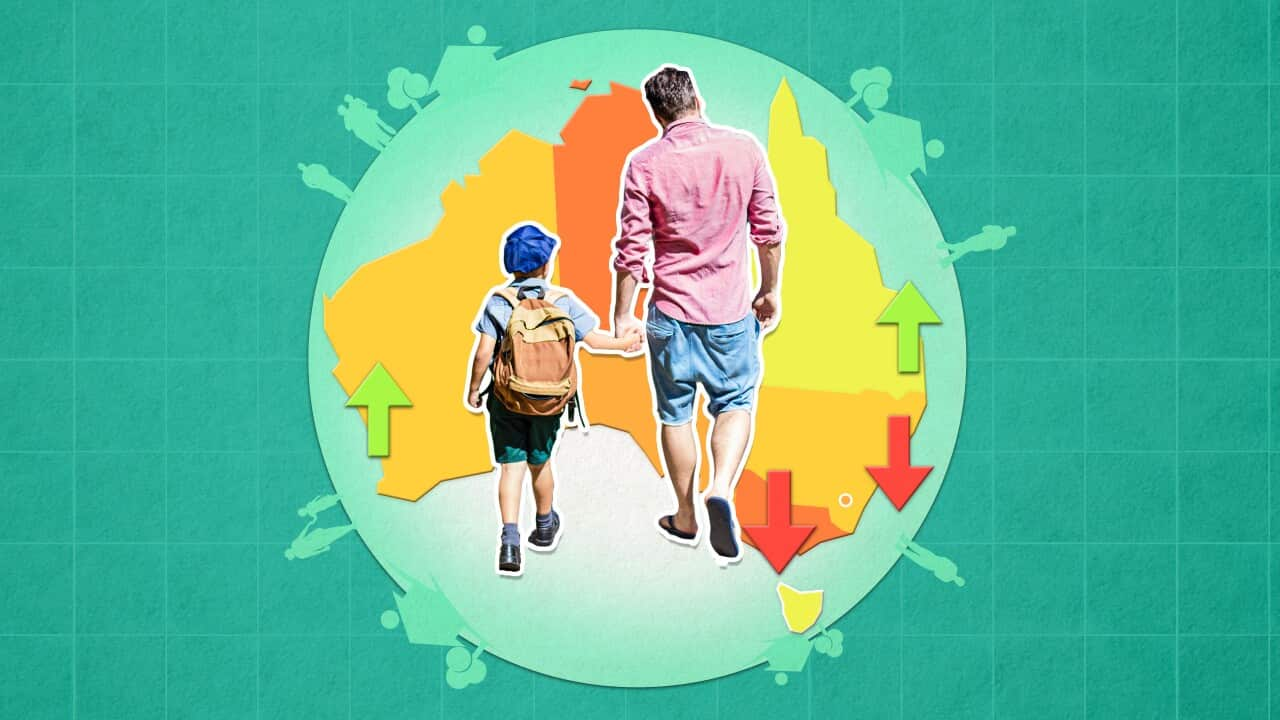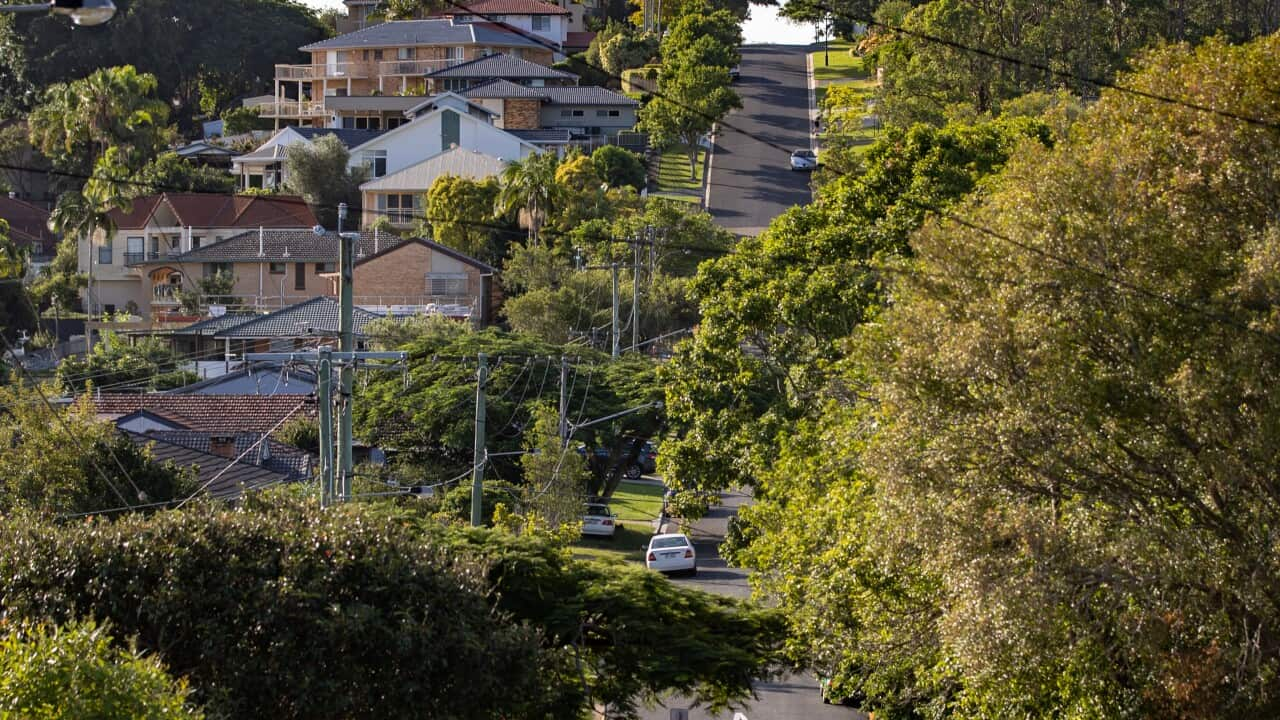Thousands of working families are leaving the inner-city suburbs of Sydney and Melbourne, causing a significant drop in population, new analysis by KPMG has found.
Urban economist at KPMG Terry Rawnsley has identified a number of "shrinking suburbs" where populations declined between 2019 and 2023 — some by as much as 3.3 per cent.
This is despite a.
Rawnsley's analysis, based on data from the Australian Bureau of Statistics, found the exodus is largely being driven by people aged under 65. The proportion of older residents is increasing in many of these areas.
But the trend isn't consistent across all Australian cities.
In contrast, inner-city suburbs in Perth and Brisbane have seen an influx of residents aged between 20 and 64 years old. This has helped boost the overall population of these areas, including Brisbane's inner north, which is up by 8.5 per cent, and Perth's Stirling area, which is up by 7.5 per cent.
Despite being areas with exceptional access to jobs and excellent local infrastructure, inner-city suburbs of Melbourne and Sydney are seeing a decline in population simply because young people can't afford to live there.Terry Rawnsley, KPMG
Why are young Australians leaving Sydney and Melbourne?
The latest found that in 2023-24, a median-income household earning $112,000 could only afford 14 per cent of homes sold in Australia, with NSW, Victoria and Tasmania being the least affordable states.
Rawnsley says the decrease in population also reflects the broader decline in birth rates over the last five years.

NSW, Tasmania, and Victoria rank as the least affordable states in Australia, according to the latest PropTrack Housing Affordability Report. Source: AAP / Mick Tsikas
The 42-year-old and her husband could only afford to buy a unit in Sydney, something that did not appeal to them as they wanted to grow their family.
"You can have your two kids in your [two-bedroom apartment] and ... go to the park. It's totally fine for many people, and that is an acceptable way of living in many cities in the world," Julie says.
"But we're spoiled in Australia. We want the big dream, that Australian dream. You want the house, and you want the land."
Instead of buying a unit in Sydney seven years ago, they bought a three-bedroom weatherboard house in Camp Hill — 6km from Brisbane's CBD — with the idea that they could live in it one day.
The pandemic helped push them to make the change.
After living in their property for two years, they built a five-bedroom modern home on the land, and a swimming pool.
"We've got the lifestyle that we always dreamed of having in Sydney," Julie says.
"We have a home, we're close to the city, we're in a really good area. It's worked out for us really well."
Exodus of young people could have ramifications
Rawnsley says housing affordability is reshaping the urban fabric of areas in Sydney and Melbourne at remarkable speed.
"There's even a millennial demographic who can't afford to either rent or buy in these locations," he says.
In contrast, older downsizers appear to be moving into these areas, which typically offer easy access to transport and services such as hospitals and other medical.
Rawnsley says the exodus of young people could make it harder for businesses such as cafes and restaurants to employ workers.
He points out young people have also been instrumental in revitalising areas such as Marrickville in Sydney, Brunswick in Melbourne and Fortitude Valley in Brisbane, making them desirable areas to live.
"If we start losing these young people, some of that vibrancy will shift away."
Young families now appear to be boosting the population of outer suburban areas, which Rawnsley says could place strain on transport, schools and other infrastructure.
Sydney residents driven further west
While Sydney's overall population continues to grow, residents living in the city's eastern suburbs, inner west and lower north shore have dropped by between 1.3 per cent and 2.7 per cent since 2019.
The eastern suburbs, which boasts coveted waterfront areas such as Bondi Beach, recorded the biggest decline in numbers. More than 6,000 people left between 2019 and 2023, and almost all were aged under 65 years old. That's more than 2.4 per cent of its population.
On the other side of the CBD, Leichhardt's population fell by 2.7 per cent while parts of Sydney’s trendy inner west, covering Marrickville, Sydenham and Petersham — previously seen as more affordable for families — lost more than 1,000 people (1.9 per cent of its population). All but 42 of these were aged under 65.

The number of working age people and children has dropped in Sydney areas within 10km of the CBD. Source: SBS News
Situated 34km west of the Sydney CBD, the area saw the biggest influx of young people between 2019 and 2023 — with an extra 46,329 people moving in. All but 3,506 of these were aged under 65 years old.
Other western areas that saw population increases of more than 11,000 residents include Bringelly - Green Valley, Rouse Hill - McGraths Hill, Campbelltown, Liverpool and Penrith.
Overall, the proportion of people aged over 65 in Sydney has grown to 15 per cent from 14 per cent in 2019.
Melbourne's shrinking and growing suburbs
Melbourne has also seen its overall population grow — by 4 per cent — but some areas are seeing a drop in numbers.
Stonnington (west) in Melbourne's south-east, which includes the affluent suburbs of Toorak and South Yarra, lost 3.3 per cent of its population between 2019 and 2023. Almost all of these were aged under 65.
Neighbouring Boroondara, also in Melbourne's eastern suburbs, lost 2.9 per cent of its population. At the same time, the number of people aged over 65 increased by 1,378.

Many areas in Melbourne within 10km of the CBD have seen working families depart. Source: SBS News
The population of Melton - Bacchus Marsh increased by 21 per cent.
Other areas with large increases include Casey (south), Cardinia and Tullamarine - Broadmeadows.
Brisbane boom impacts many areas
Bucking the trend down south, young people have flocked to inner-city Brisbane suburbs, with the population surging between 2019 and 2023 in areas such as Newstead, Bowen Hills, Morningside, Seven Hills and Paddington.
The population of inner-city Brisbane grew by 17.9 per cent, including 13,432 working-age people.
Rawnsley says this could make Brisbane more attractive to large companies.
"National firms might be looking more closely at Brisbane and Perth as a place to put more of their operations because they can see they have got more workers in and around the CBD, which means they're easily accessible to their business."

The working-age population in areas 10km from Brisbane's CBD has increased dramatically. Source: SBS News
The area with the largest percentage growth is Jimboomba, located almost 50km south of the CBD, which experienced a 25.9 per cent increase.
Another greenfield area, Browns Plains, also saw significant growth.
"Families are increasingly considering greenfield developments [real estate opportunities in previously undeveloped areas] in Brisbane where land is more readily available," Rawnsley says.
"Yet, these areas come with their own set of challenges, such as access to jobs, essential services and employment."
Perth's fastest-growing suburbs
Like Brisbane, the population in prime inner-city locations in Perth has grown, including in suburbs such as Subiaco, Northbridge and Highgate.
Residents have also flocked to the neighbouring area of Stirling, which includes waterfront areas such as Scarborough.

The number of children and working-age people has increased in Perth, although there are also more older residents. Source: SBS News
Wanneroo, north of the Perth CBD and home to the suburb of Yanchep, increased its population by 10 per cent (20,857 people).
"In the face of affordability-driven movements, Perth is becoming a haven for economic activity and urban growth," Rawnsley says.
"Although the challenge now is ensuring that additional housing supply helps to keep Perth an affordable place to live."


